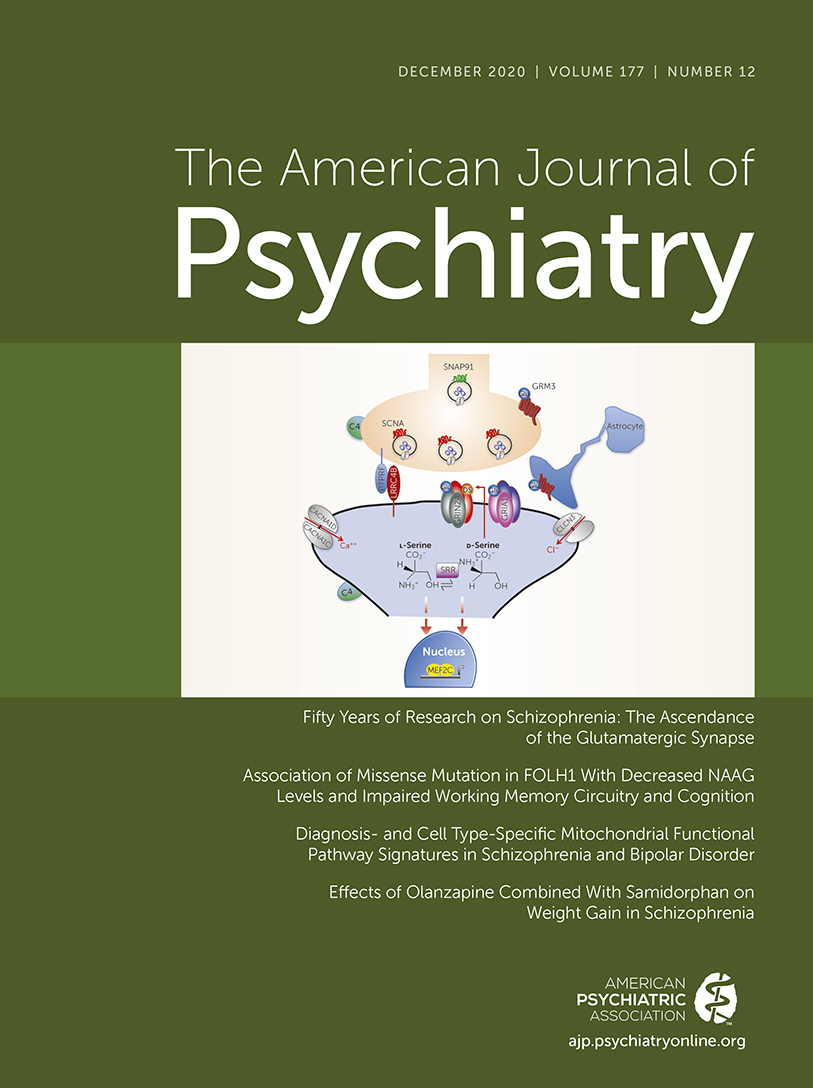Association of Missense Mutation in FOLH1 With Decreased NAAG Levels and Impaired Working Memory Circuitry and Cognition
Abstract
Objective:
Altering the metabotropic glutamate receptor 3 (mGluR3) by pharmacology or genetics is associated with differences in learning and memory in animals and humans. GRM3 (the gene coding for mGluR3) is also genome-wide associated with risk for schizophrenia. The neurotransmitter N-acetyl-aspartyl-glutamate (NAAG) is the selective endogenous agonist of mGluR3, and increasing NAAG may improve cognition. Glutamate carboxypeptidase II (GCPII), coded by the gene folate hydrolase 1 (FOLH1), regulates the amount of NAAG in the synapse. The goal of this study was to determine the relationship between FOLH1, NAAG levels, measures of human cognition, and neural activity associated with cognition.
Methods:
The effects of genetic variation in FOLH1 on mRNA expression in human brain and NAAG levels using 7-T magnetic resonance spectroscopy (MRS) were measured. NAAG levels and FOLH1 genetic variation were correlated with measures of cognition in subjects with psychosis and unaffected subjects. Additionally, FOLH1 genetic variation was correlated with neural activity during working memory, as measured by functional MRI (fMRI).
Results:
A missense mutation in FOLH1 (rs202676 G allele) was associated with increased FOLH1 mRNA in the dorsolateral prefrontal cortex of brains from unaffected subjects and schizophrenia patients. This FOLH1 variant was associated with decreased NAAG levels in unaffected subjects and patients with psychosis. NAAG levels were positively correlated with visual memory performance. Carriers of the FOLH1 variant associated with lower NAAG levels had lower IQ scores. Carriers of this FOLH1 variant had less efficient cortical activity during working memory.
Conclusions:
These data show that higher NAAG levels are associated with better cognition, suggesting that increasing NAAG levels through FOLH1/GCPII inhibition may improve cognition. Additionally, NAAG levels measured by MRS and cortical efficiency during working memory measured by fMRI have the potential to be neuroimaging biomarkers for future clinical trials.



